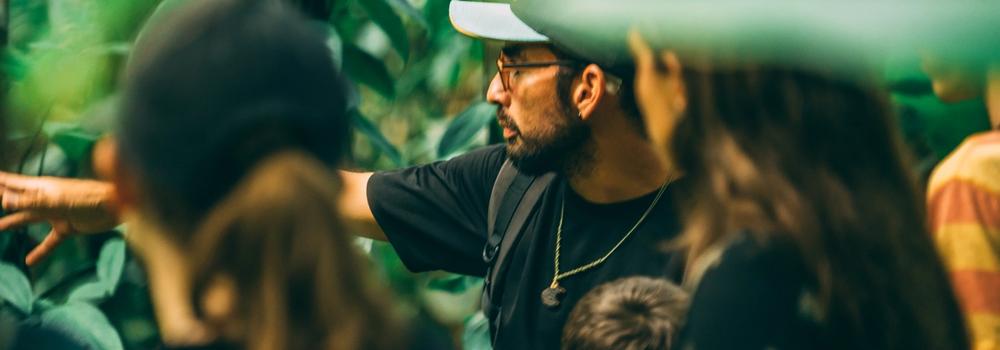Published July-03-2020
Citizen Science at Tranquilo Bay: Kids Taking Epic Photos
Whether under the water or along a forest trail here at Tranquilo Bay, my motto is always, “The more you look, the more you see!” I’ve always loved to document my observations in nature. It’s making a memory, whether through …

Stacey
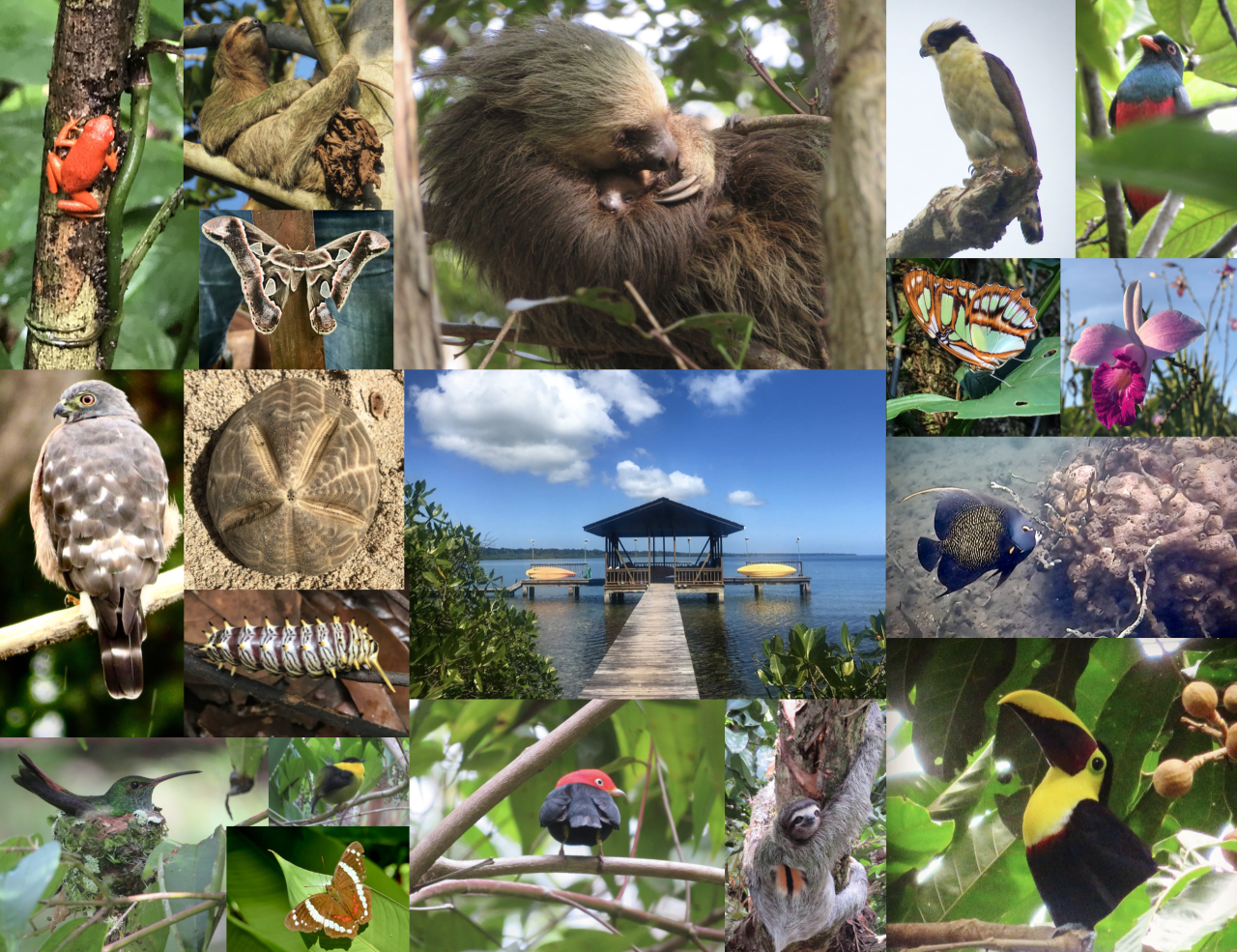
Whether under the water or along a forest trail here at Tranquilo Bay, my motto is always, “The more you look, the more you see!”
I’ve always loved to document my observations in nature. It’s making a memory, whether through writing about it, taking a photo, making a drawing or keeping a list of what you’ve tallied along your outdoor jaunt into the wilderness.
What’s fantastic about the multitudes of media available to us is that we’re not taking anything away from or leaving anything behind in the place we’ve visited, we’re simply capturing our own perception of a specific thing in a specific place at a specific point in time.
And while a photo can make for a lovely memory, it can also hold a wealth of information.
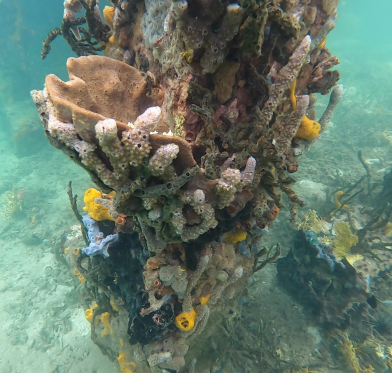
A marine biologist looking at this photo of a sea life-encrusted pillar holding up our dock can quantify, qualify, make speculations, determinations, hypotheses and theories about what appears in this quick camera shot. The amount of species of life on just a single stretch of concrete is mind boggling! Here we can see shellfish, fire coral, a multitude of different sponges, tunicates and a variety of invertebrates that only increases upon closer inspection.
Through something as quick and easy as a camera shot, a scientific story begins to unfold. Any time we can help contribute in the form of scientific documentation, Tranquilo Bay loves to participate, and lately we’ve had some great opportunities to join in on.
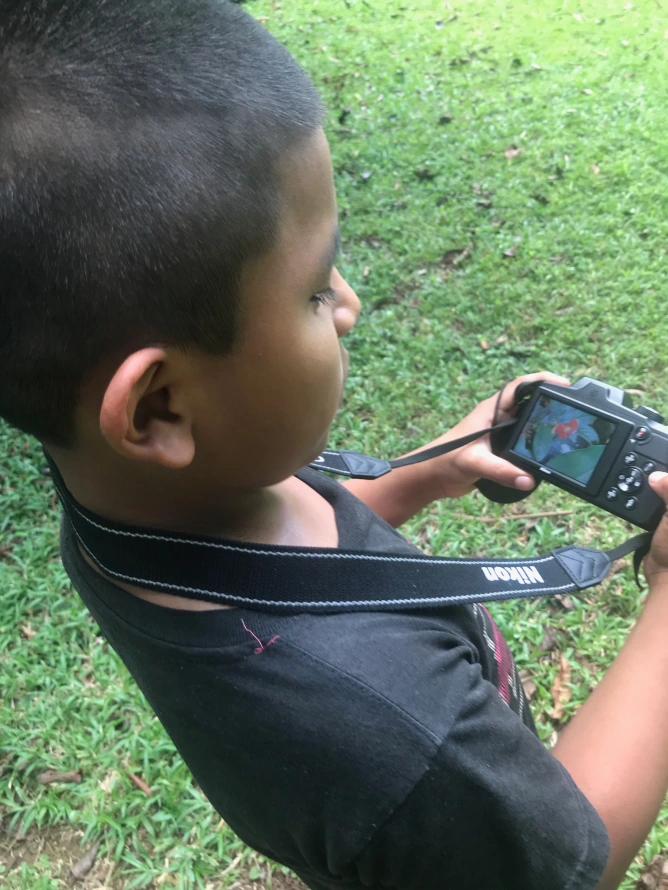
Bladi sharing his shot of a hotlips flower.
Tranquilo Bay is a long-time participant of bird counts, particularly Cornell Lab of Ornithology’s where birders all around the world list what species they’ve seen and upload it onto the eBird app for the specified 24-hour period. We also took part in our first iNaturalist Bioblitz this month, we three guides and the six kids old enough to use a camera documenting hundreds of species of land and marine life in all forms, shapes, colors and kingdoms.
By contributing our sightings and photos to the iNaturalist app, spearheaded by National Geographic and California Academy of Sciences, we’re adding to a constantly growing database of flora and fauna that can actually contribute to scientific and biological studies and monitoring. Not to mention we’re taking part in the mapping out of current range and distribution of species as you and more and more iNaturalist users from every corner of earth contribute their observations.
And by the by, this isn’t just a one day a year type thing, anyone can always upload photos of cool life they’ve encountered and often times other iNaturalist contributors can help you figure out what it is if you can’t identify it yourself!
On June 5th, 2020, while the waters of Tranquilo Bay were still morning-calm, I slid into the warm, sparkling Caribbean waters to enter into a coral reef world to document underwater life with my BioBlitz partner of the morning, Patrick Viola.
Patrick, 11 years old, manned the underwater camera and took photos of all the various species that greeted us upon first entering the water. We got the most common species quickly and effortlessly, three-spotted damselfish, schoolmaster, turtle grass, finger coral, long-spined sea urchin. We don’t want to miss anything even something you see so often might hardly notice it anymore, like the ever-plentiful sponge brittle sea stars. We scoured the sea floor, getting close and looking between the feathery fronds of the Atlantic sea plumes which look like underwater vegetation but are actually soft corals and amongst the fronds, were able to search out the beautiful yet elusive flamingo tongue worm!
We moved along slowly, picking out all the many different forms of life from sponges to sea slugs, spaghetti and feather duster worms, sailor’s eyeball alga and donkey dung sea cucumbers! We were excited to see the spotted moray eel was home, poking out from a large and decorated coral head, a toothy grin looking adequately threatening for the photo!
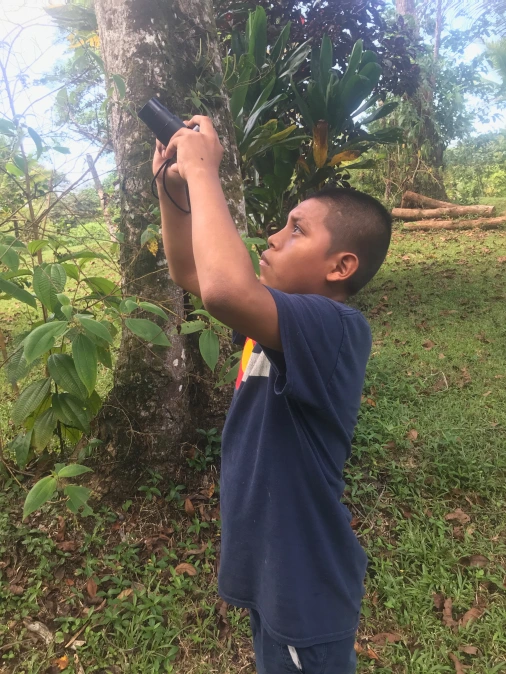
Israel, shooting ever upward!
The other kids here at Tranquilo Bay participated on more solid ground and hit the trails, taking photos of plants and insects, birds and sloths. Overall, for our first Bioblitz, we’re pretty proud of ourselves here at Tranquilo Bay for ranking in at 286 species photographed and uploaded into the iNaturalist database. But now we’re hooked and we know we can do better, so we’re going to make this something of a regular thing, further illustrating our place on the global map of biodiversity for both fun and rewarding engagement and important citizen science.
Stay tuned for more to come!
